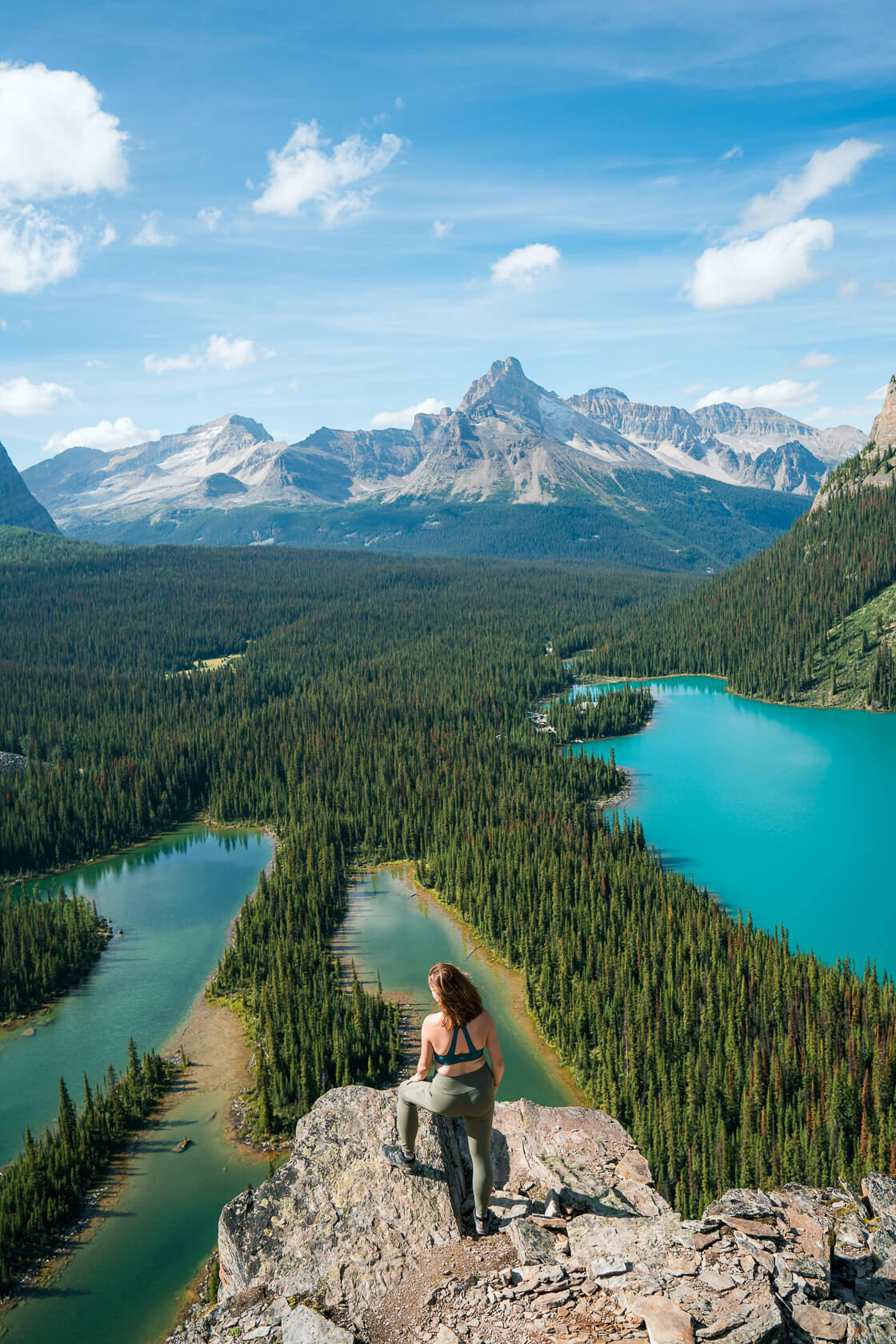Lake O’Hara – The Alpine Location Everyone Should Visit Once in Their Lifetime
Popular for its beautiful scenery, Lake O’Hara is definitely one of the jewels in the crown of British Columbia. The area offers a variety of contrasting landscapes, with scenery as diverse as it is impressive. You can find clear blue lakes nestled in hanging valleys, glaciers clinging to craggy peaks, rushing waterfalls, alpine meadows and larch forests, all surrounded by some of the most spectacular mountains in the world. This rich environment is also home to an array of wildlife including hoary marmots, pikas, bears, deer and a various bird species. To top it all off, there’s a beautiful network of hiking trails for all levels of experience, making it a special destination for anyone lucky enough to visit.
Lake O’Hara Sounds Amazing. What’s The Catch?
So here’s the bad news – getting to Lake O’Hara is not easy. The access road is 11 km long and is closed to outside vehicles. This means you either have to travel on foot or take a shuttle bus to get there. Both options have their own challenges. Anyone who’s ever tried to get a reservation for the shuttle bus for the summer will tell you how difficult it is to get a spot. The demand is high and supply is low as Parks Canada has a strict limit on the number of summer day users who can access Lake O’Hara. Although there is no formal limit to the number of day hikers who can walk the 11 km access road, the length of the hike is a limitation enough. Don’t worry though! Later in this guide, we will go through all the information you need to be able to visit Lake O’Hara.

Why is it so hard to visit Lake O’Hara?
Lake O’Hara is located in a secluded part of Yoho National Park, the smallest park in the Canadian Rockies. It is designated as a UNESCO World Heritage site and is considered one of the most beautiful alpine locations on earth. If everyone could visit when they want, Lake O’Hara would quickly become one of the most popular lakes on everyone’s bucket list, just like Lake Louise and Moraine Lake. To avoid overcrowding and prevent the area from being loved to death, a quota system was put in place in 1976 to limit the number of visitors using the bus service operated by Parks Canada. This helps protect the sensitive ecosystem while maintaining a backcountry hiking experience for visitors.
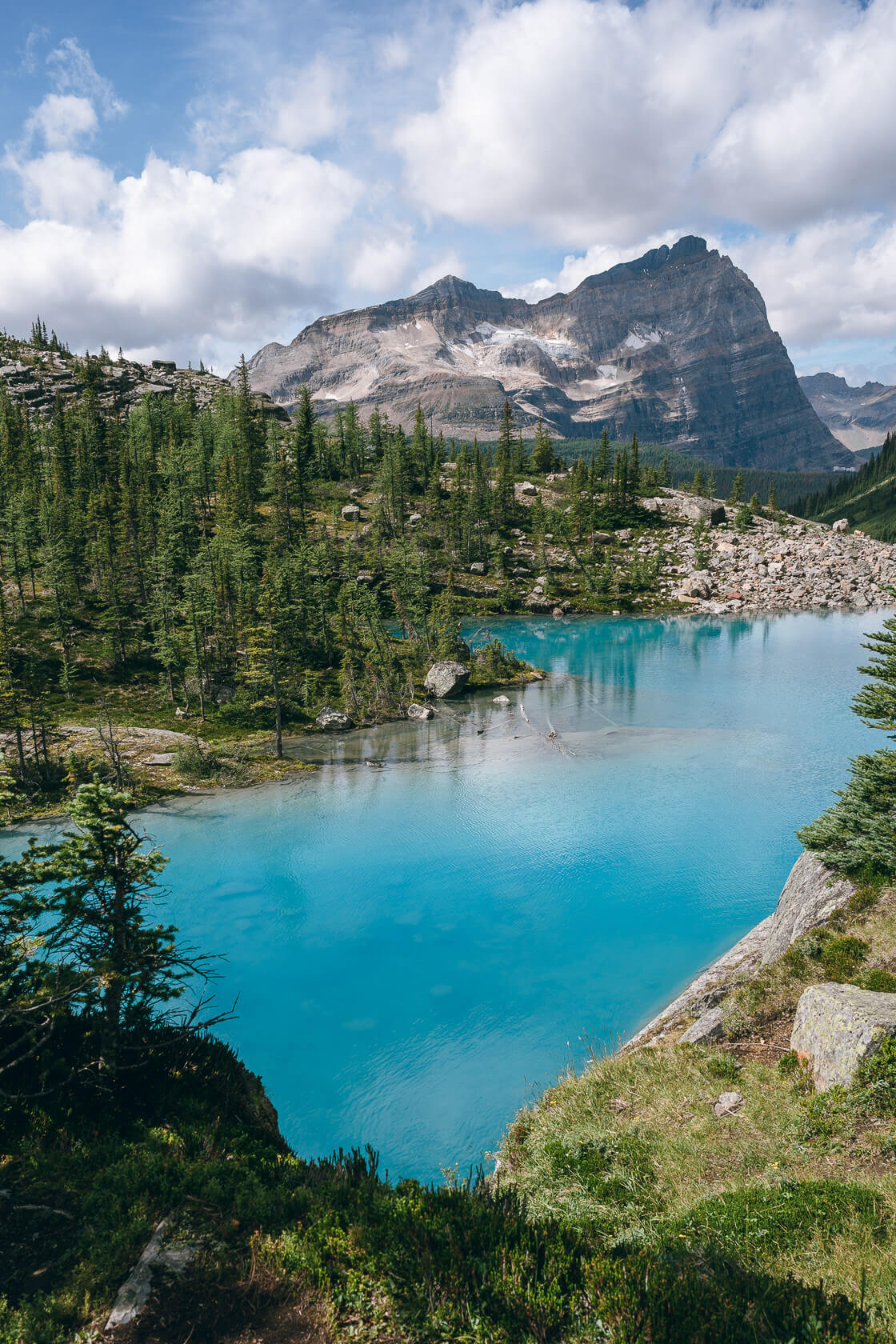
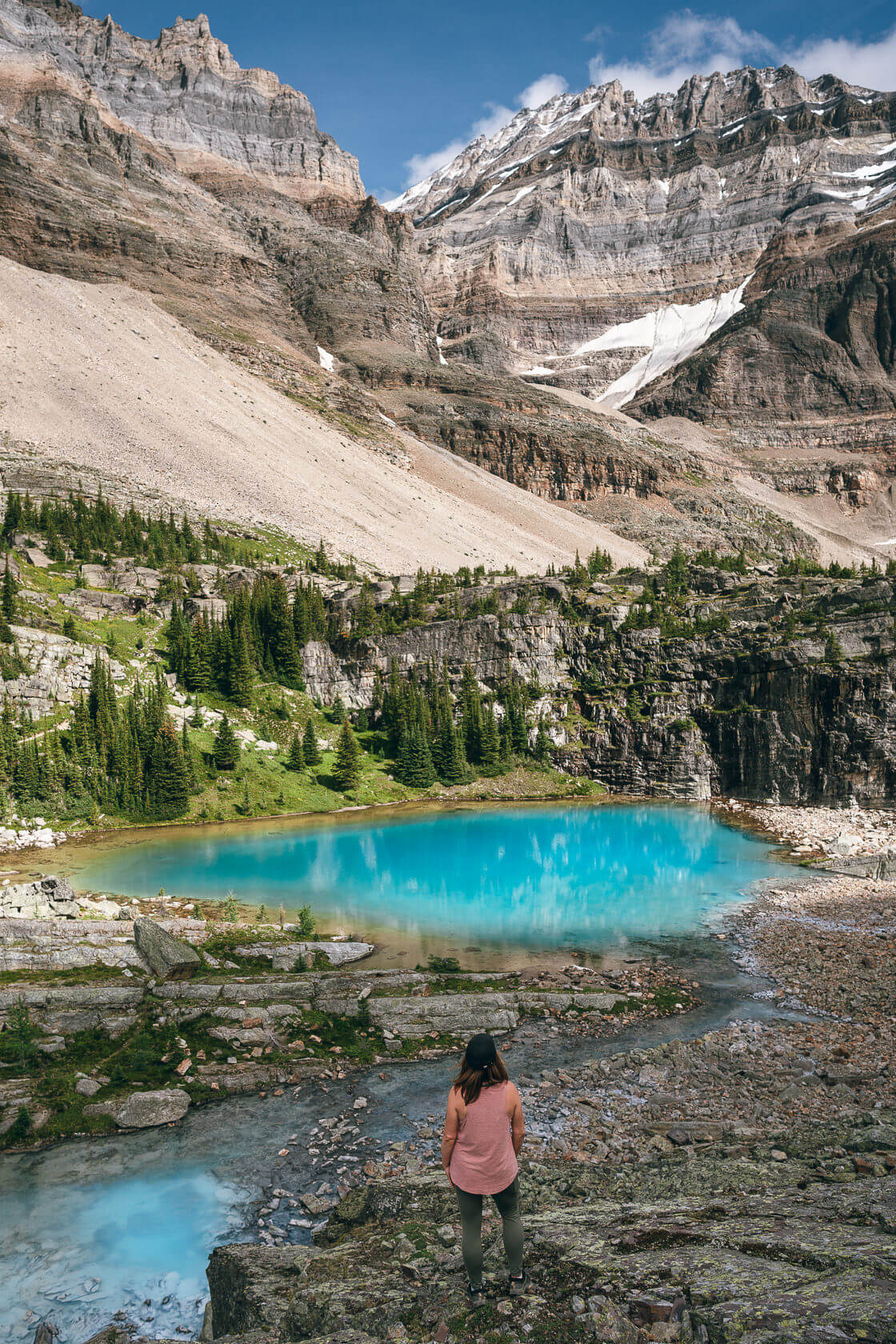
Where is Lake O’Hara?
If you look on the map of Canada, you’ll see that Lake O’Hara is on the BC side but not far from the border of the adjacent Alberta. The most popular lake in the area, Lake Louise, is only a 20 min drive from Lake O’Hara parking lot. This is the starting point for shuttle buses and for those who want to walk to Lake O’Hara. There is no public transport to the parking lot, so traveling by car is your only option to get there.
Getting to Lake O’Hara
As we mentioned before, the access road is closed to outside vehicles so you either have to travel on foot or by a shuttle bus. There are a few options available but they all require planning way ahead.
Option 1 – Staying at the Lake O’Hara Lodge
One option is to book a minimum 2-night stay at the exclusive Lake O’Hara Lodge. This place is absolutely stunning, especially the cabins by the lake, but you need to book well in advance for the summer – often months or even years ahead – and it’s not cheap. Last time we checked, the rate was CAD 945 per night for a room in the lodge and CAD 1335 per night for one of the lakeshore cabins. But if you have the means, it’s definitely worth it.
If you choose this option, you don’t need to worry about reserving the Parks Canada shuttle as the lodge has its own bus.
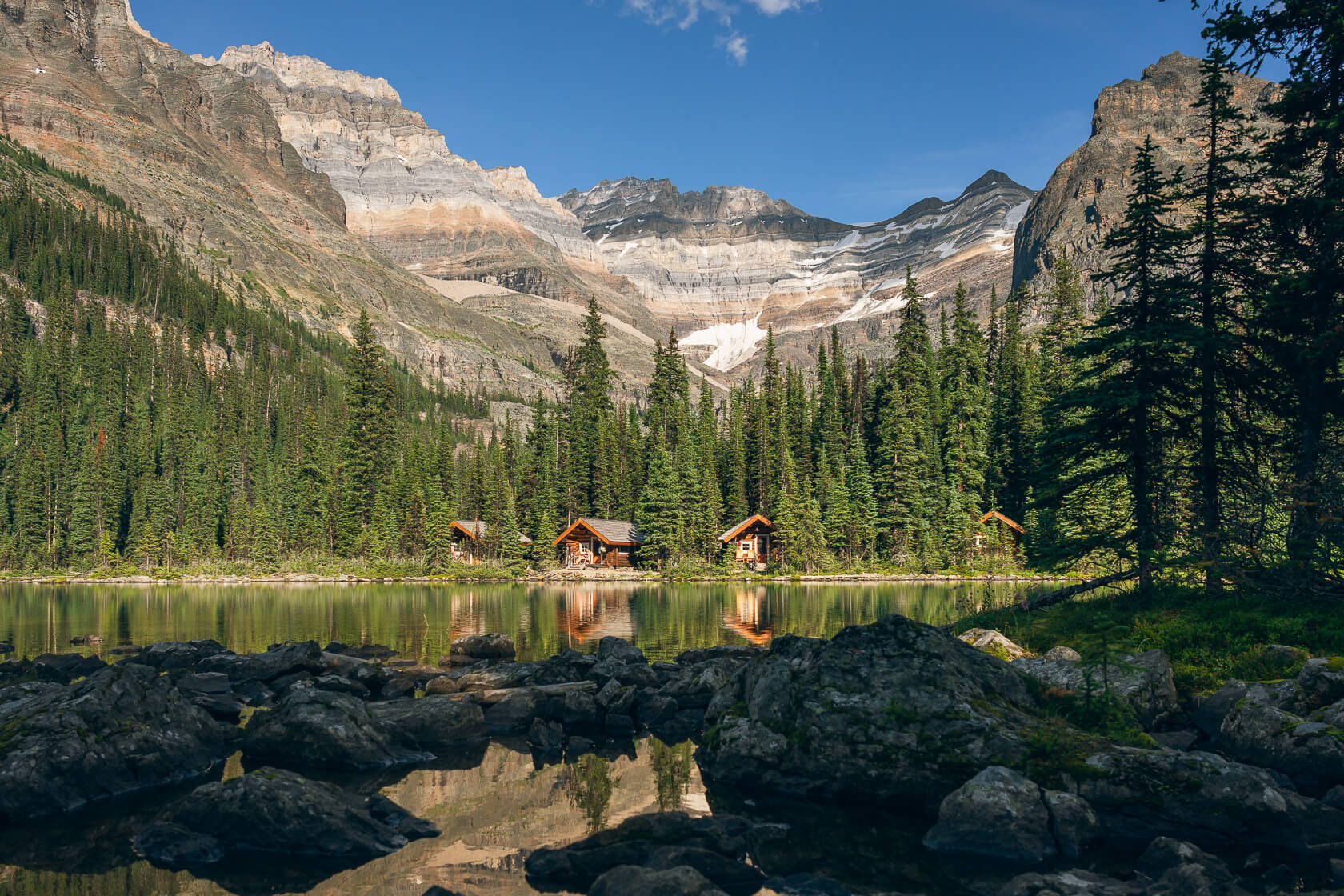
Option 2 – Staying at the Alpine Club of Canada cabin
Your second option is to stay in one of the two rustic cabins in the Alpine Meadow operated by the Alpine Club of Canada. This experience is quite different from staying at the Lake O’Hara lodge as you will be sharing a giant bunk bed with other people (16 at Elizabeth Parker Hut, or 8 at Wiwaxy cabin). These huts are always in high demand, so you can only get them through a lottery system the previous fall. The good news is that if you win the lottery, your reservation includes a seat on the Parks Canada shuttle bus.
Option 3 – Staying at the campground
At the Parks Canada campground, you can camp for up to three nights. There are 30 tent sites available which you can book online or by phone. However, it’s like trying to get tickets for Taylor Swift – chances of getting through are low and they often sell out within minutes. The booking window typically opens in January.
The campsite has running water, 2 shelters with wood burning stoves, personal storage boxes and more. Your reservation includes a seat on the Parks Canada shuttle bus.
Option 4 – Day use shuttle
The remaining spots on the Parks Canada bus are for day use visitors, but there are only 1,000 spots available for the entire summer season. You need to apply months in advance and it’s a random draw, so it may take a few years before you win a seat. Though some get lucky the first time.
The next random draw will open in March. You can find more information on the Parks Canada website.
Option 5 – Hiking in
Okay, so what do you do if you don’t want to stay the night or aren’t lucky with any of the options above? Well, there’s still one more alternative – you can hike up the access road to the lake. The hike itself isn’t particularly difficult or technical, but it’s 11 km each way plus any additional hiking you want to do at the lake. So you should be prepared for at least 30 km of hiking in one day.
The hike is not very exciting as it’s mostly in the trees. On the plus side, it’s an easy dirt road with around 400m of elevation gain. There are two slightly steeper sections (one of which is towards the end) but overall, most of the trail is pretty easy. At a moderate pace, it took us just under 2.5h to reach the lake.
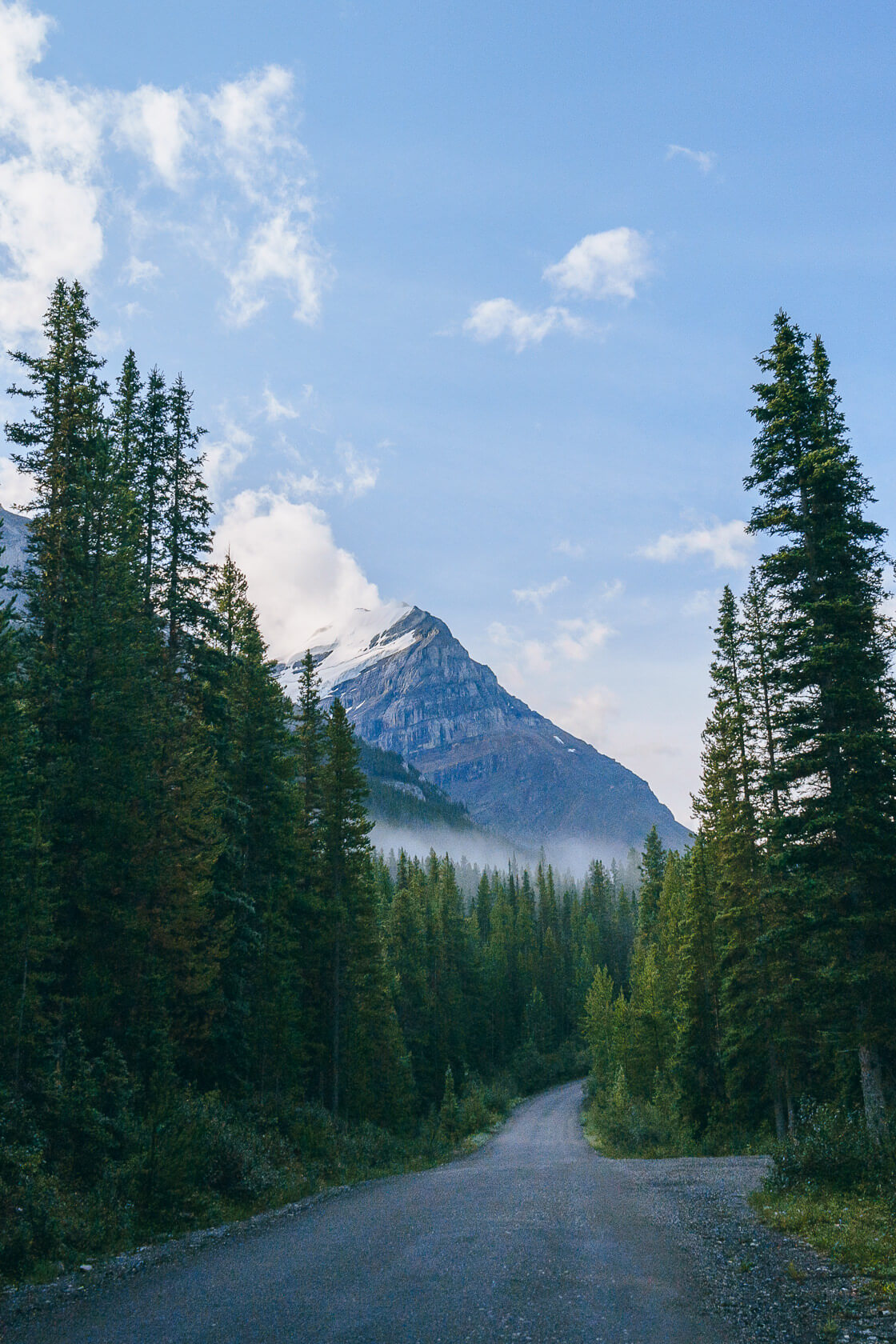
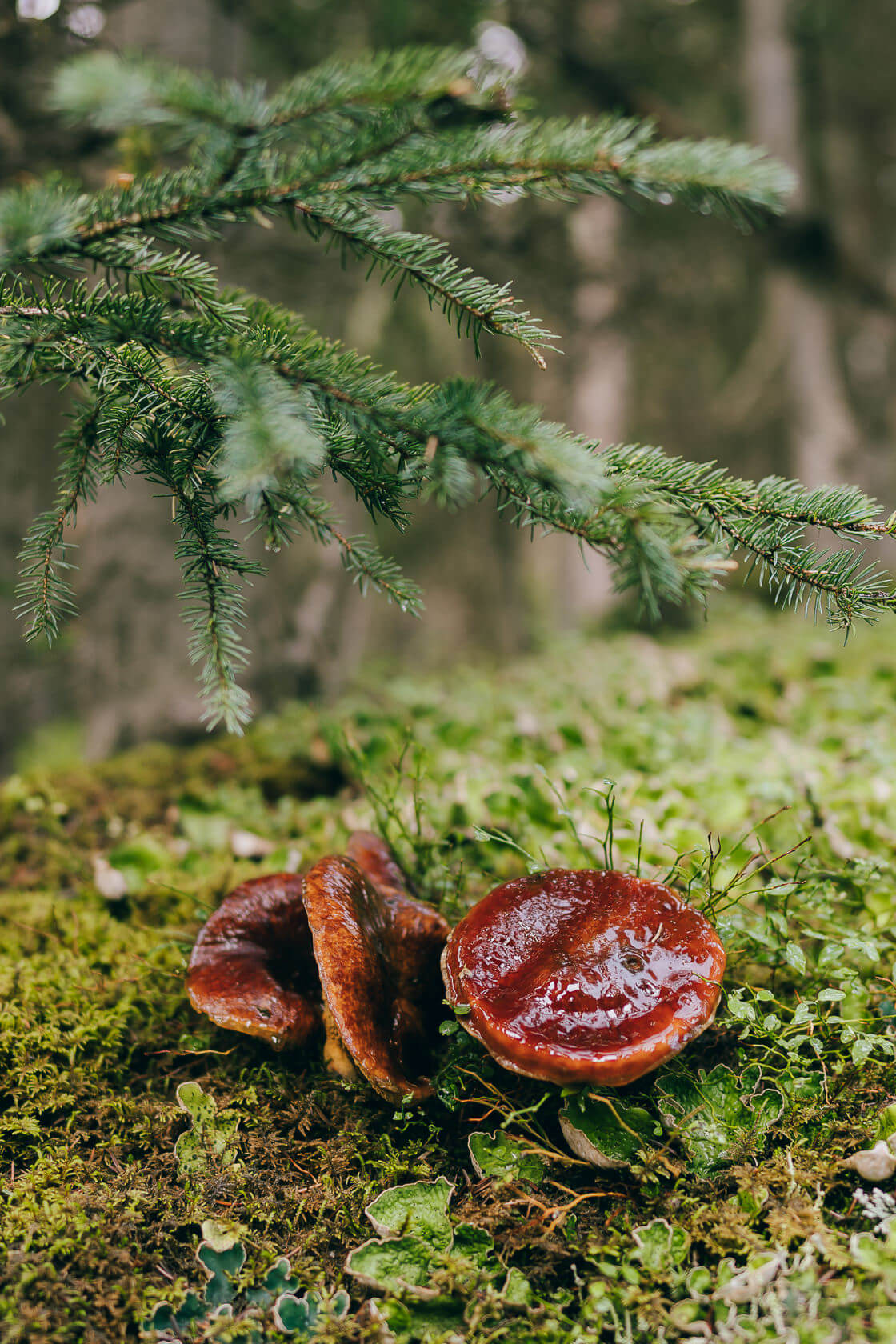
Last Minute Spots on Lake O’Hara shuttle
Last Minute Spots On The Shuttle To Lake O’Hara
We read online that you can get a last-minute spot on the shuttle bus to Lake O’Hara if you show up early and put your name down on the waitlist, so we arrived at 7:45 am hoping to get two seats. Turns out this information is outdated and there’s no such thing as a wait list anymore. Now the only way to get on that bus is by frequently checking the Parks Canada reservation website for last minute cancellations and grabbing a spot as soon as one appears. However, we tried this for 5 days in a row before our hike and never saw a single ticket. So if you don’t win a ticket in the lottery and are still set on Lake O’Hara, assume that you will be hiking up the access road.
Last Minute Spots On The Shuttle From Lake O’Hara:
When you’re ready to head back, you can try your luck with the return shuttle and see if any no-shows open up a seat. It’s first come first serve and cash only. In the summer of 2024, tickets were CAD 15 cash per person. The return shuttle leaves three times at 2:30, 4:30 and 6:30. We finished our hike around 5:30 pm and were first in line for the last bus. There were 16 other people waiting with us and not everyone got on.
So as tempting as it might be to count on that return shuttle, there are no guarantees. If you hike up, be prepared to hike back down too.
Permits for Lake O’Hara
There is no permit designated for just Lake O’Hara, but to hike there or anywhere else in Yoho National Park, you’ll need a valid Parks Canada day pass or an annual Discovery Pass. You don’t need to have it on you during your hike, but you do need to display it in your car at the parking lot. If you have a Discovery Pass, hang it from your rear view mirror, and if you have a daily pass, simply put it on your driver’s side dashboard.
You can buy your annual Discovery Pass here. This pass will allow you to visit other National parks as well, such as Banff, Jasper or Revelstoke.
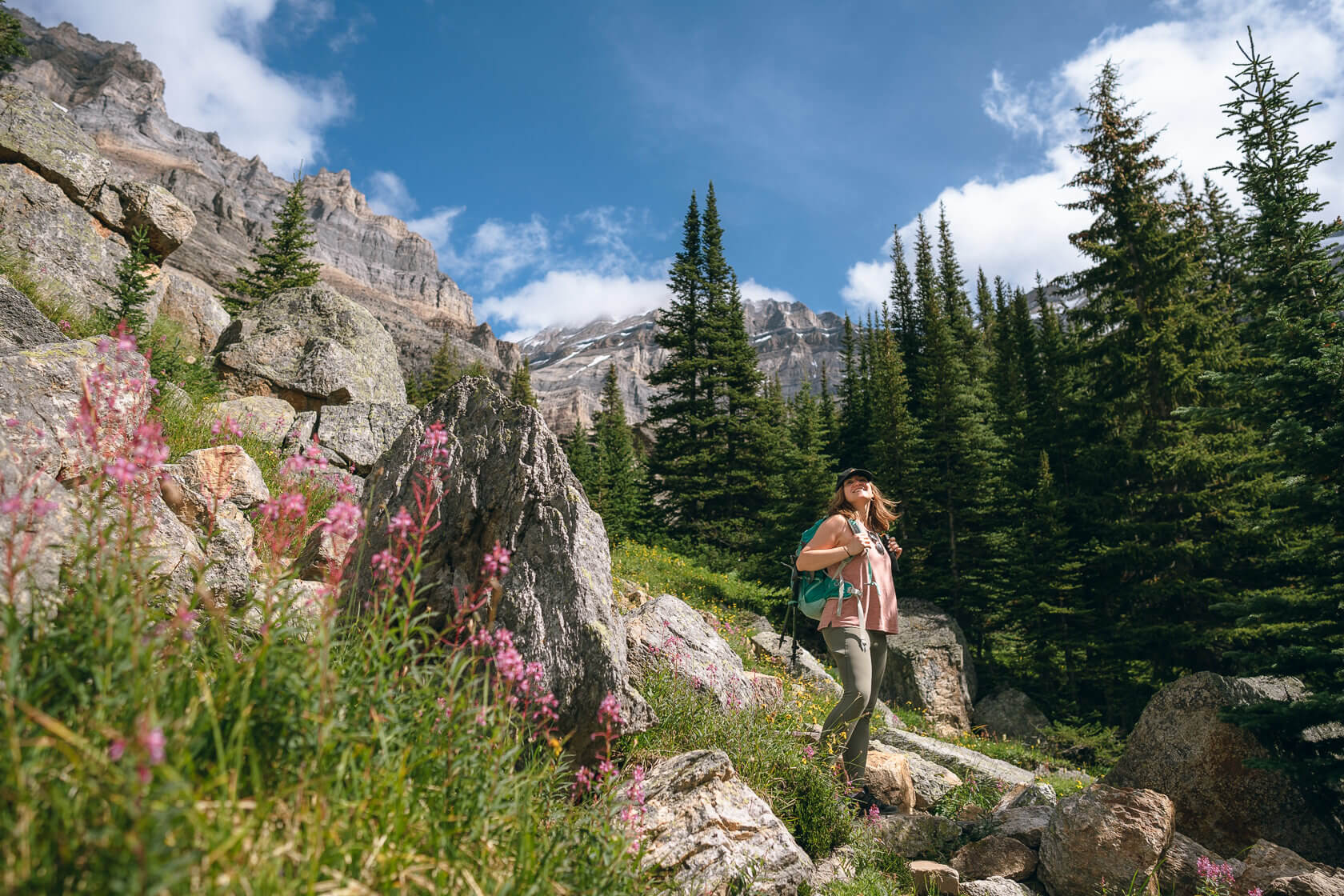
Trails at Lake O’Hara
Although beautiful, Lake O’Hara itself is not the main reason why so many people want to visit the area. The real appeal is the opportunity to hike one of a number of trails that start at the lake. Every single one of them offers something unique, so you really can’t go wrong no matter which one you pick. The most popular trails are:
- Lake O’Hara Lakeshore Trail: short and scenic 2.8 km loop with no significant elevation gain
- Lake Oesa Trail: 6.4 km out and back trail leading to a beautiful cirque lake (elevation gain 240 m)
- Opabin Plateau: 5.9 km loop – the most Instagrammed viewpoint in the area (elevation gain 250 m)
- Lake MacArthur: 7.5 km – 10 km loop (depending on the route) with an elevation of up to 400m. This is a beautiful trail leading to one of the largest high alpine lakes deep in Yoho NP
If you’re more experienced, there are several highline trails to choose from that require navigating boulders and some degree of scrambling. They are:
- Wiwaxy Gap/Huber Ledges
- All Soul’s Route
- Yukness Ledges
- Abbot Pass
- Odaray Grandview – the trail leads to one of the most breathtaking vantage points in the area, but it’s also a key corridor traversed by grizzly bears, wolverines, mountain goats and other creatures. There are voluntary guidelines in place to limit the number of hikers who can visit each day, so check the visitor log at the head of the Odaray Highline trail and don’t go if it’s full.
The most popular option is the Alpine Circuit because it includes Wiwaxy Gap, Yukness Ledges and All Soul’s Route. This 12.5 km route with an elevation gain of around 1,000 meters links up a number of other trails in the area and there are many options to extend the hike, e.g. by taking a detour to the stunning Opabin Plateau viewpoint.
If you’re staying the night and only have time for one hike, make it the Alpine Circuit.
But if you have to hike in and out on the same day, you may want a hike that is a bit shorter! Below, we’ll dive into our top recommendation for a day hike that captures the best of what Lake O’Hara has to offer.
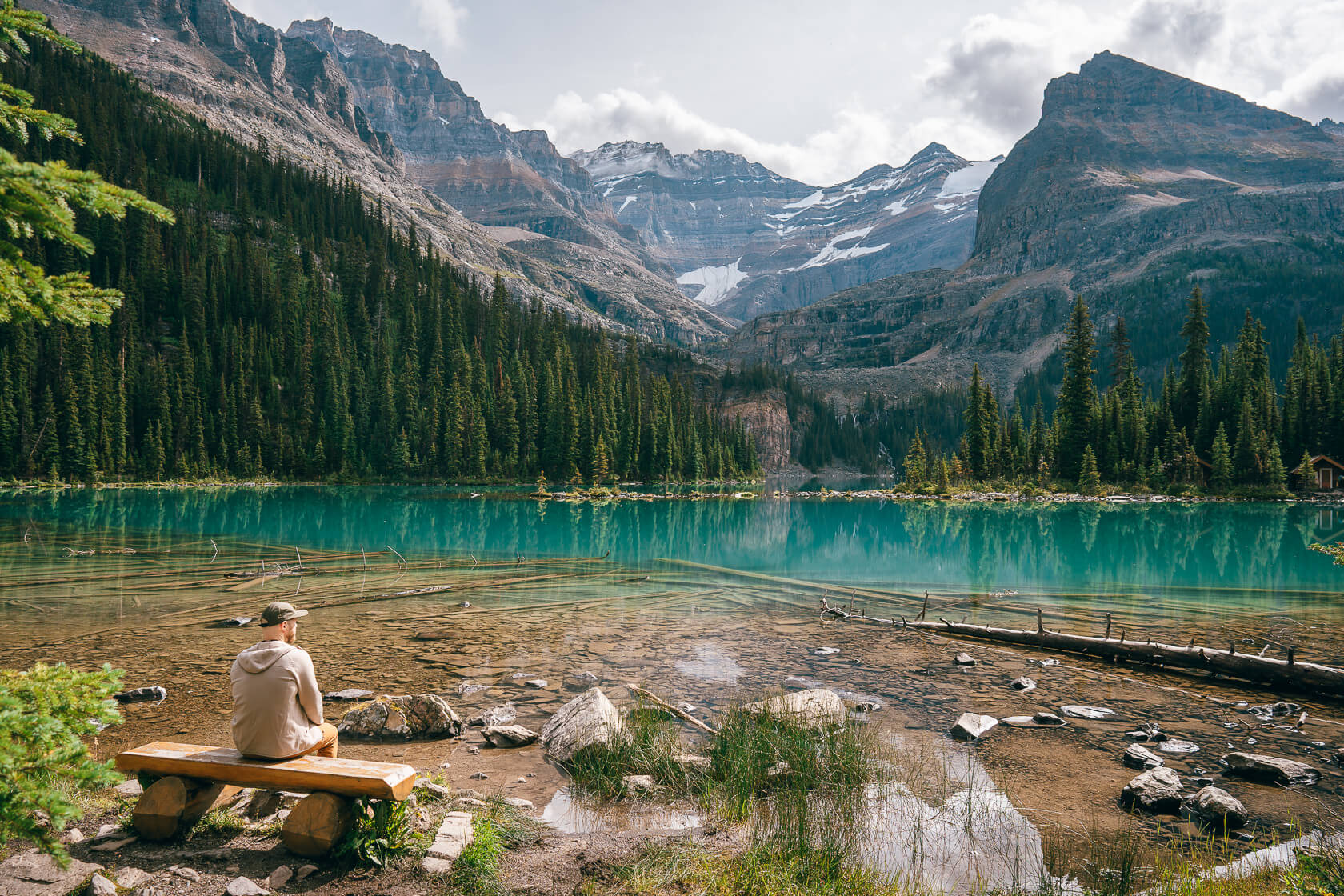
Hiking The Best Day Hike At Lake O’Hara: Lake O’Hara and Lake Oesa Via Alpine Loop Trail
If you’re one of the hikers walking 22 km round-trip along the access road, you want a solid reward for the effort and trust us, the Lake O’Hara and Lake Oesa via Alpine Loop trail delivers exactly that. This loop is rated moderate on AllTrails, about 9km with 421m of elevation gain and a 3-4 hour completion time, but the scenery is next-level almost the entire way, so plan on taking longer, especially if you’re a photographer.
Since it’s a loop, you can go clockwise or counterclockwise. We followed AllTrails’ suggestion to go clockwise (to the left of the lake). This route lets you ease into the elevation gain with panoramic views almost immediately. The main highlight, Opabin Plateau Viewpoint, is near the end of the loop and the descent from there is fairly steep. Going clockwise will save you from climbing up to the plateau, which is a big plus!
If you’ve still got time and energy left at Opabin Plateau, you can extend your hike and climb up to All Soul’s Prospect (part of the Alpine Loop Trail). This route adds 225 m of elevation gain and should take 2-3 hours at a moderate pace. But if you’re satisfied with your hike at this point, you can simply hike down to Lake O’Hara.
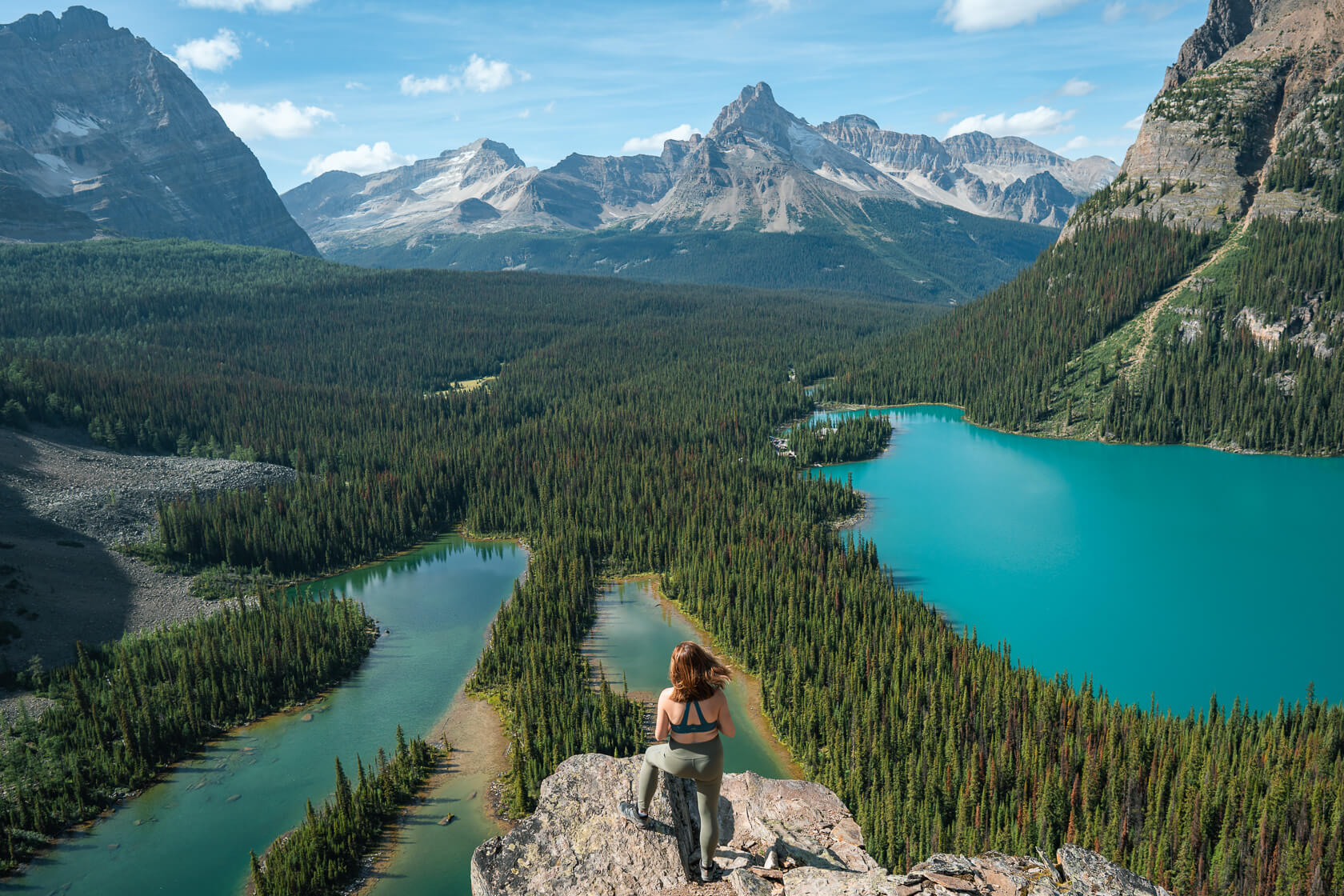
Planning considerations for Lake O’Hara and Lake Oesa Via Alpine Loop Trail
Distance: Approximately 9 kilometers round trip
Difficulty: Moderate (there’s some easy scrambling)
Elevation gain/loss: 421m
Peak elevation: 2,354 meters (Lake O’Hara is at 2,020 meters)
Pure moving time: 3-4h
Dogs: yes, but they must be on leash and they’re not allowed on the shuttle or any of the facilities (so you must hike in and out the same day)
Mountain bikes: No
Toilets: there are pit toilets in the parking lot and at the lake, but none along the trail
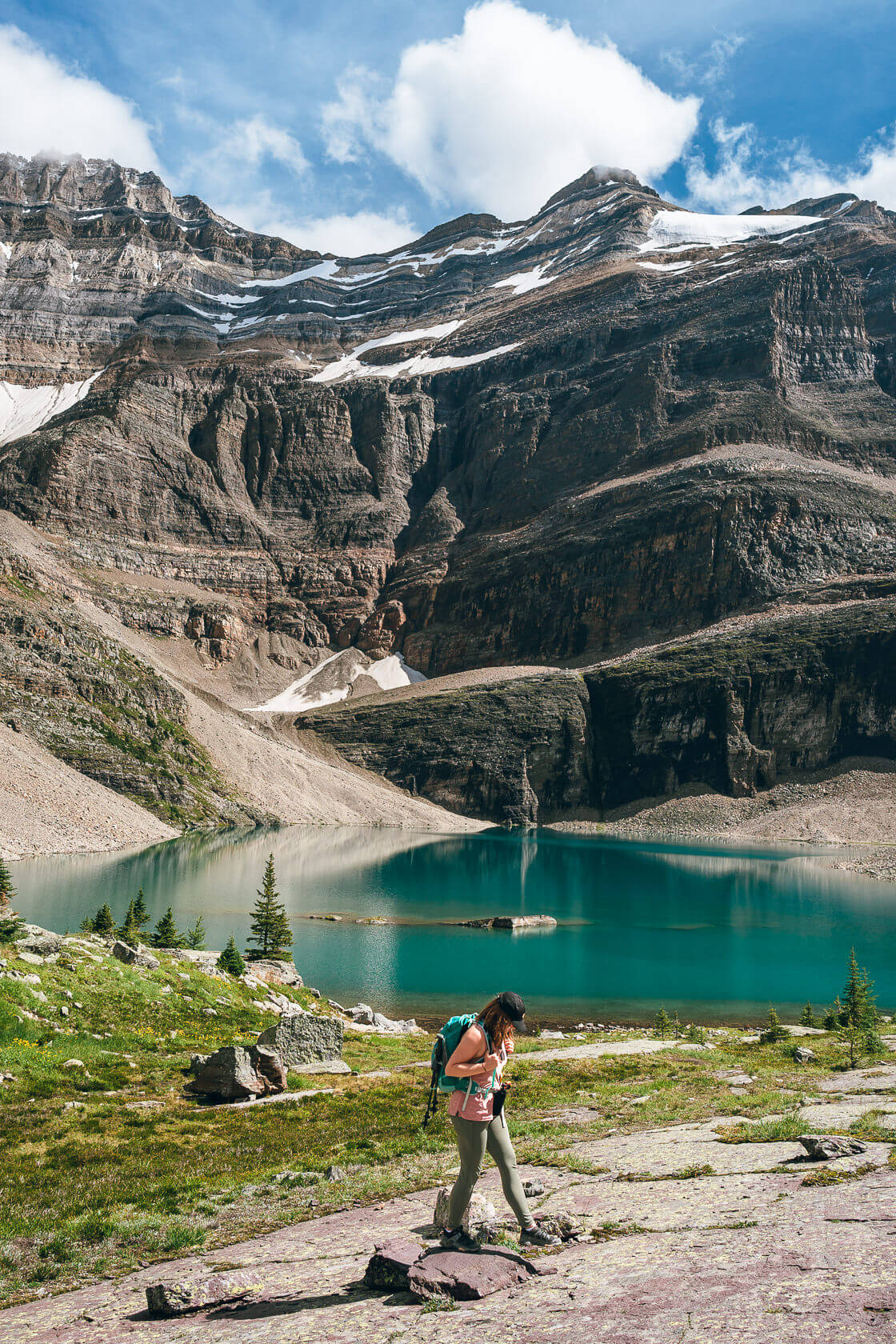
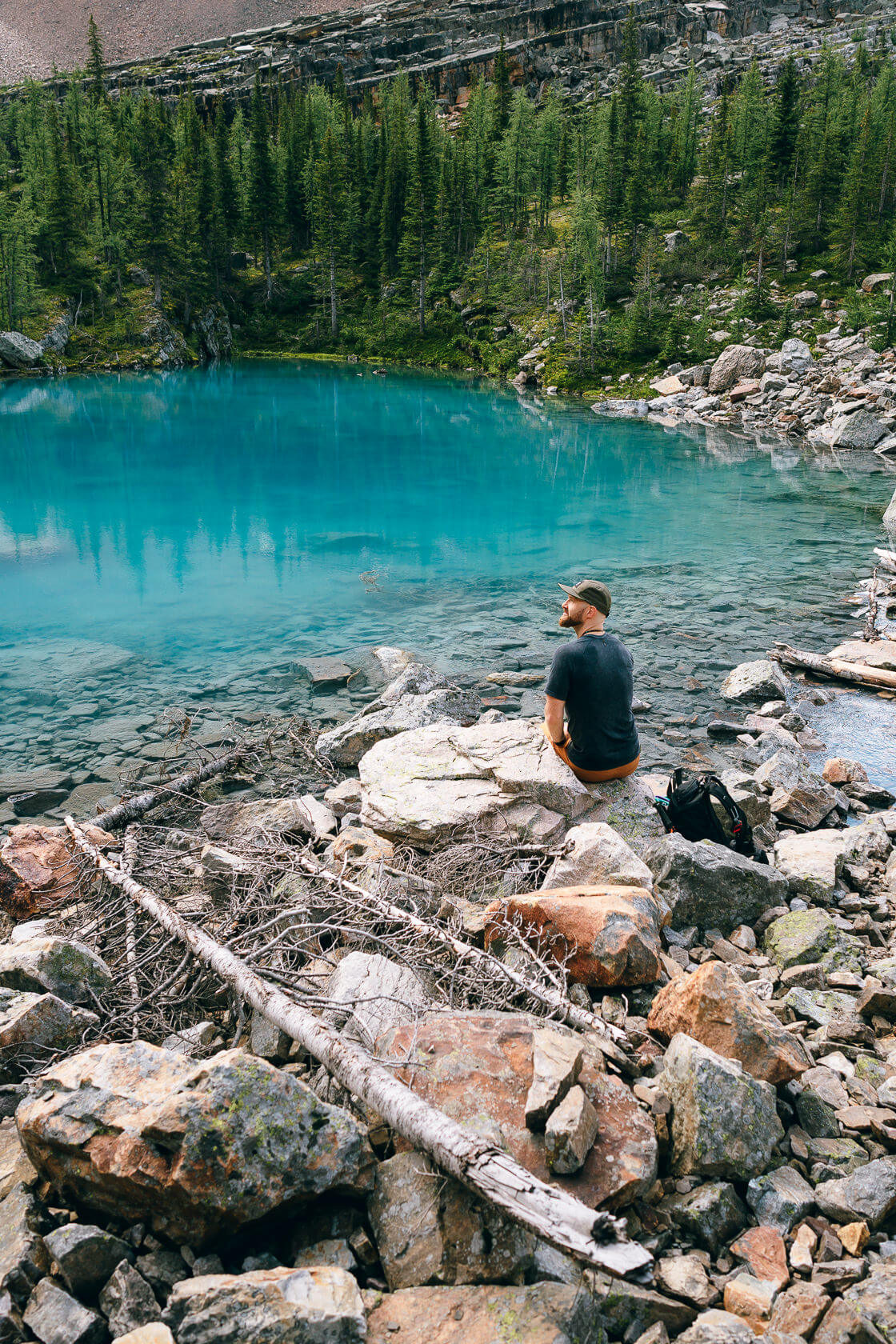
Our timeline hiking Lake O’Hara and Lake Oesa Via Alpine Loop in 2024
7:45 am – we arrived at the parking lot hoping to get on the waitlist for the first shuttle only to be told there are no waitlists – if we want to visit Lake O’Hara, we have to hike. The park warden told us we’d need cash for the shuttle back and made sure we knew what we were getting ourselves into, but of course we were already up for the challenge.
7:45 – 8:15 am – with no cash in hand, we drove to the nearest ATM about 12-min drive from Lake O’Hara parking lot. It wasn’t exactly easy to find it, so here’s the location in case you need it. Look for Laggan’s Mountain Bakery, walk to the back of the building and you’ll find the ATM tucked away on the right.
Tip: you may also want cash for the carrot cake at Le Relais Day Use Shelter at Lake O’Hara as it’s famous for being the best carrot cake in the backcountry. We wouldn’t know though as they sold out by the time we got there!
8:30 – 10:45 am – We hiked up the 11 km access road while shuttle buses drove past us. It took us just over two hours to reach the day-use shelter at Lake O’Hara. The elevation gain was gentle, about 400 meters. We didn’t rush but kept a steady pace.
10 :45 – 11:15 am – Once we reached the shelter, we took some time to explore, take photos and have a quick snack. The pit toilets were a welcome stop before heading out again.
11:15 am – 17:30 pm – We hiked Lake O’Hara and Lake Oesa via the Alpine Loop Trail. The scenery was breathtaking everywhere we looked so we took two long breaks at Lake Victoria and Opabin Plateau to soak it all in. Without breaks it should only take 3-4 hours to do the loop (moderate pace).
17:30 – 18:20 pm – We made it back 1 hour before the last shuttle of the day. We were first in line, but by the time the shuttle arrived, there were 16 of us hoping to catch a ride. Not everyone made it on, but luckily we got our spot.
18:30 – 18:50 pm – The shuttle took us back to the parking lot.
Our experience hiking the Lake O’Hara and Lake Oesa Via Alpine Loop in 2024
Rather than tell you how beautiful it is up there, we made a video to show you 🙂
How difficult is Lake O’Hara and Lake Oesa Via Alpine Loop Trail?
It’s a moderate hike with some very easy scrambling, a bit of scree, a boulder field and a few exposed sections. The trail is generally well marked but once you’re up on Opabin Plateau, it gets crisscrossed with multiple other trails and although they’re usually well marked, having an offline map or at least a photo of a map can be super handy for keeping you on track.
Where are the best views?
Honestly? Everywhere! This trail is just mind blowing. Along the way, you’ll encounter several stops where you can sit on the rocks, catch your breath and admire the views. Some standout spots? The two small lakes, Victoria and Lefroy, on the way to Lake Oesa. A little further up past Lake Oesa you’ll find another great spot where you can get two blue lakes in a single shot.
Then there’s the iconic Opabin Plateau Viewpoint with a sweeping view of Lake O’Hara and Mary Lake. But really, we kept stopping every 5 minutes to take photos and take in the mountains, wild alpine flowers and every last lake along the way.
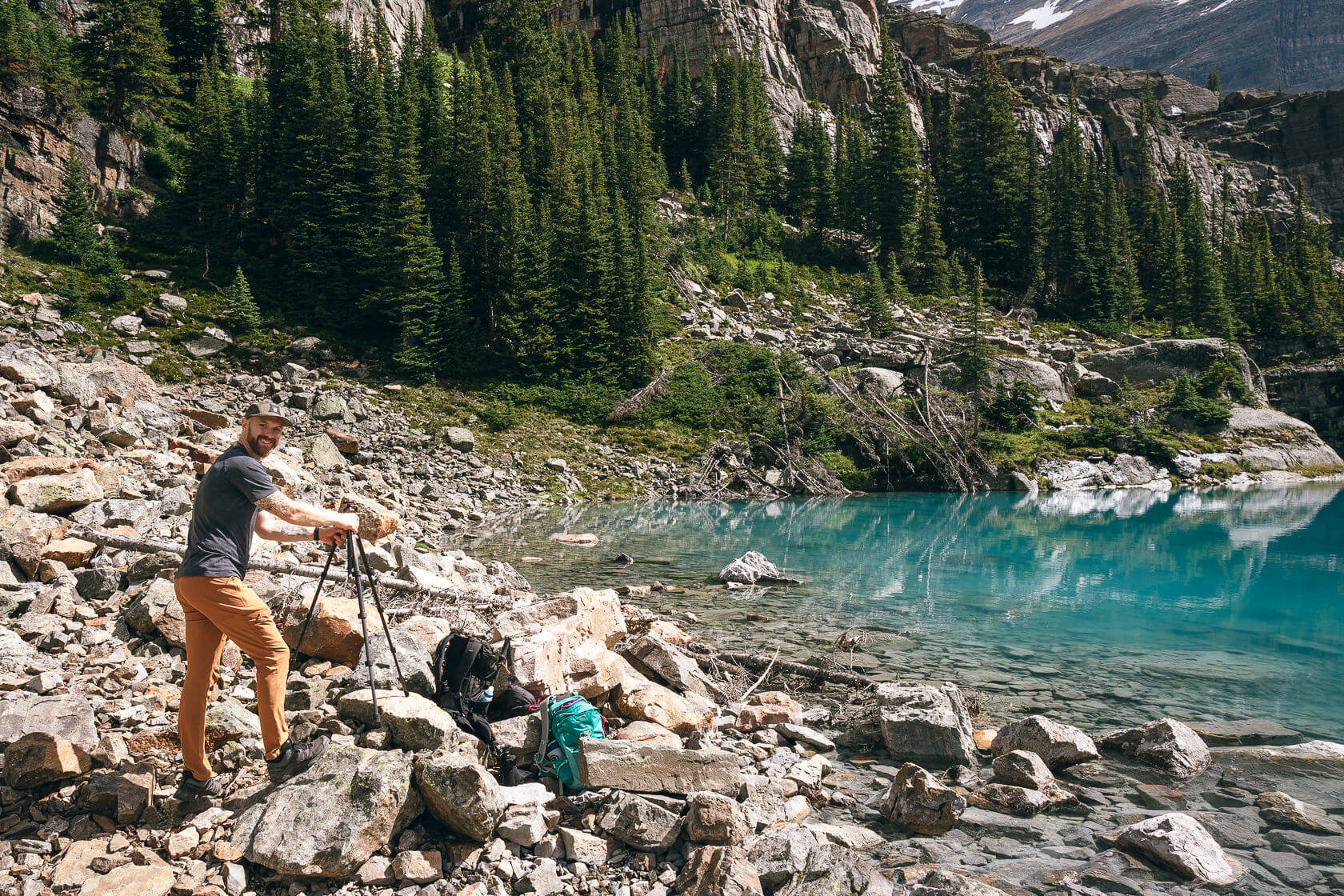
Will I have it to myself?
The restricted access to Lake O’Hara allows for a sense of solitude even during the peak season. You’ll see others on the trail, but there’s a good chance you’ll also find quiet moments and get viewpoints to yourself. We had a whole 30-minute lunch break at Victoria Lake without anyone around and even the popular Opabin Plateau Viewpoint was ours for a good 15 minutes.
Do I need a map?
Even though the trails at lake O’Hara are well-signed, some sections can blend into the rocky terrain and be a bit tricky to navigate. For the most part, they are wide enough for only one person. At times, there is no clear path – only trail markers such as cairns and small painted double-yellow lines in blue squares. So yes, bring a map as it’s never a good idea to be in the mountains without it.
If you want to use a hiking app, we would recommend the AllTrails+ subscription as it allows you to save the hiking route directly in the app. Get AllTrails app here and use OUTINBC30 at checkout for 30% off.

Leave No Trace
When we didn’t win the lottery for the shuttle bus, it was definitely a letdown. But after our visit to Lake O’Hara we understand why Parks Canada tries so hard to protect this place. Despite visitor limits and signs telling hikers to stick to the trails, some hikers still go off-trail and cause damage. The lottery system may not be perfect, but it plays a crucial role in keeping this fragile alpine ecosystem intact and keeping Lake Ohara from turning into another overrun destination.
If you’re planning a visit – whether here or anywhere else in nature, you can minimise your impact by following these simple Leave No Trace principles:
- Know the area and what to expect
- Stick to trails and designated campsites
- Always pack out what you bring in, including trash and leftover food
- Don’t take rocks, plants, flowers or anything else you find
- If you need to cook, consider using a stove instead of building a fire
- Keep your distance and never feed animals
- Keep noise down and give everyone some space
By following these simple rules you can help keep Lake O’Hara stunning for everyone!
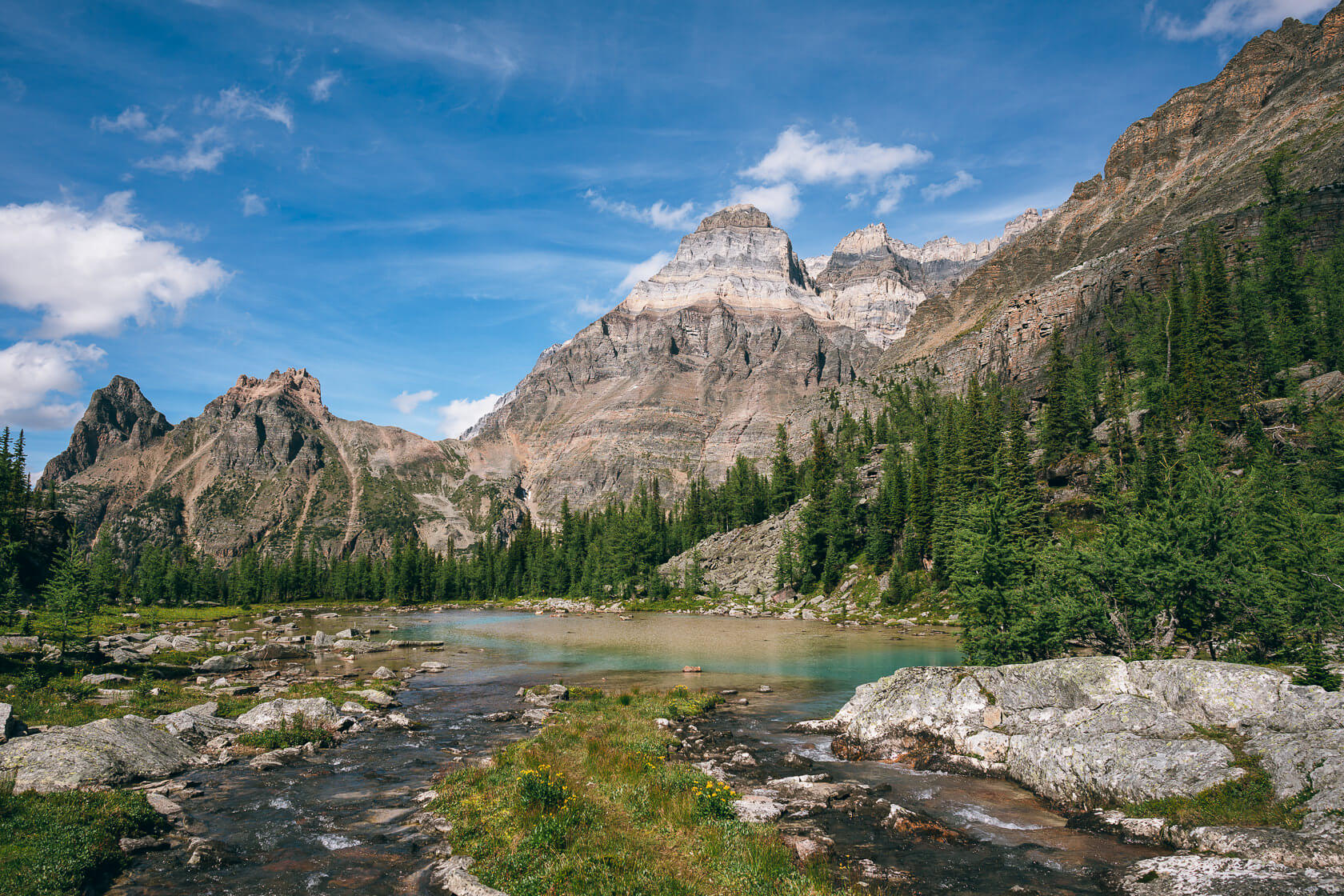
Where to stay before or after your Lake O’Hara hike
The closest two places to the trailhead for Lake O’Hara are Lake Louise and the small town of Field. However, you can also stay in Golden (BC) or even Banff (AB). Both towns are only 50 mins drive from the Lake O’Hara parking lot.
The most picturesque place near Field is the Emerald Lake Lodge, a timber property overlooking the stunning Emerald Lake (the third most popular lake in the area after Lake Louise and Moraine Lake). If you’re looking for luxury, the Fairmont Chateau Lake Louise is the most obvious choice. And for those on a budget looking for a ‘European style’ hostel with private rooms, we recommend the Dreamcatcher Hostel in Golden.
If you’d like to camp, you may be able to stay directly in Yoho National Park, but be prepared to book when the spots are released in January as they go really fast. If you miss out don’t worry – some campsites operate on a first come first serve basis. You can find more information and book on the Parks Canada website:
There are plenty of other options including private rentals on Vrbo. However, the Rockies are busy in summer so we recommend booking well in advance as many places offer free cancellation.
Got more questions about Lake O’Hara?
There is so much to see in the Lake O’Hara area and we hope that you get to visit sometime. If you still have questions, drop them in the comments and we’ll be glad to help!
